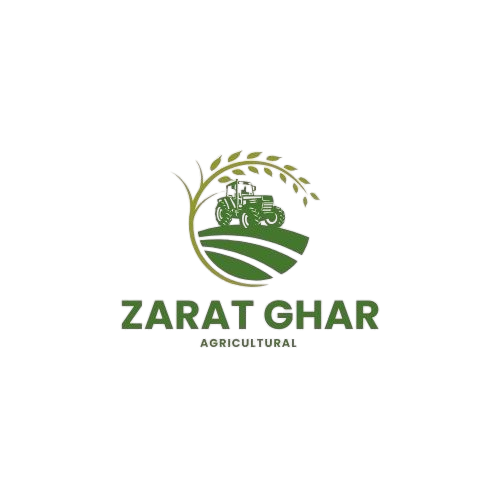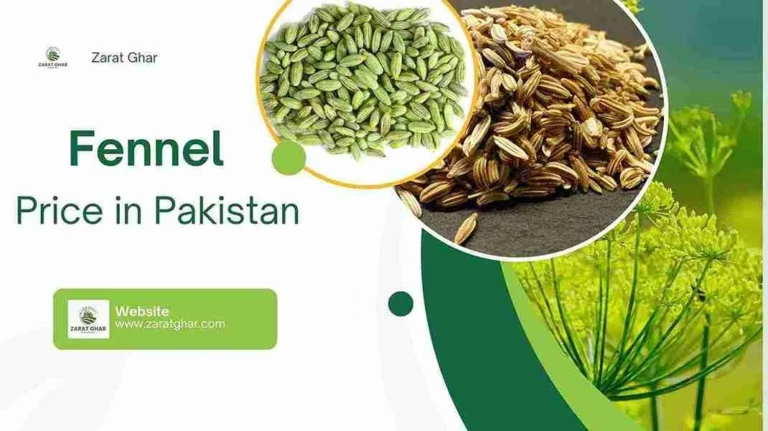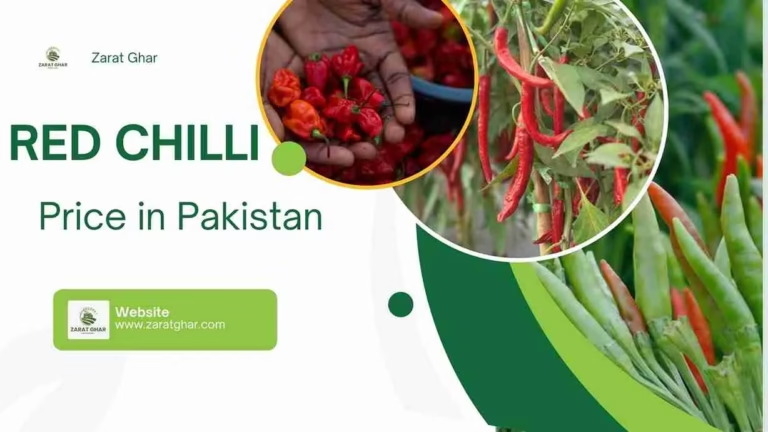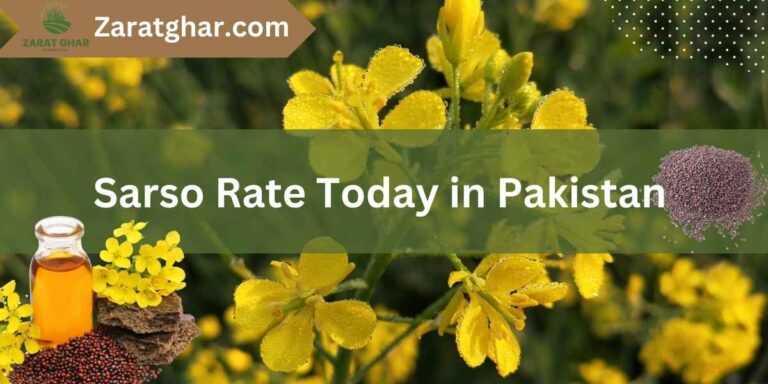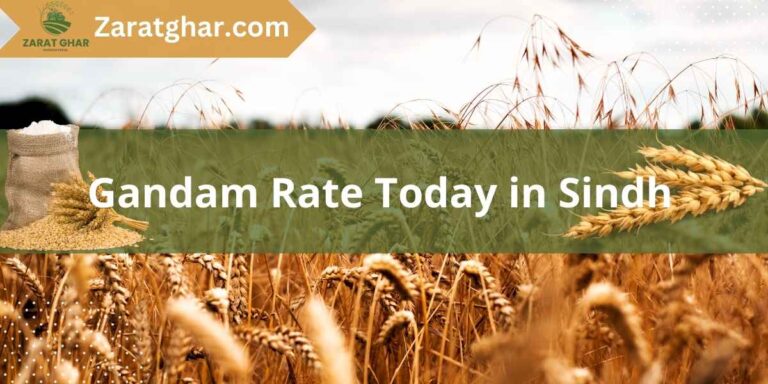Sugarcane Rate In Pakistan June 2025
Sugarcane Rate In Pakistan is hovering between PKR 400-425 per 40 kg. Farmers, millers, and government officials are all in discussion on the everchanging price, with farmers claiming rising production costs warrant a higher price per 100kg.
Also Can Check the Onion Price Today in Pakistan
Sugarcane Rate in Pakistan Today per 100 kg
2025
| Month | Price |
|---|---|
| JANUARY | Rs. 1,000-1,062 |
| FEBRUARY | Rs. 1,000-1,062 |
| MARCH | Rs. 1,000-1,062 |
| APRIL | Rs. 1,000-1,062 |
| MAY | Rs. 1,000-1,062 |
| JUNE | Rs. 1,000-1,062 |
| JULY | |
| AUGUST | |
| SEPTEMBER | |
| OCTOBER | |
| NOVEMBER | |
| DECEMBER |
We discuss everything from local discrepancies in prices to long term predictions.
What is the main point here? Changes in the sugarcane market price have an impact on the people and production of the country. Our reliable analysis provides you with no nonsense sugarcane market tactics to keep yourself at the top of your game. This guide serves as an accurate pointer towards the sought after market movements in the sugar industry.
Sugarcane Rate in Punjab 2025
| District | Price per 100 KG |
|---|---|
| Bahawalnagar | Rs. 12,400 to Rs. 13,500 |
| Bahawalpur | Rs. 12,400 to Rs. 13,500 |
| Faisalabad | Rs. 12,500 to Rs. 12,600 |
| Gujranwala | Rs. 12,500 to Rs. 12,600 |
| Lahore | Rs. 12,500 to Rs. 12,600 |
| Multan | Rs. 12,650 to Rs. 12,670 |
| Jauharabad | Rs. 12,400 to Rs. 13,500 |
| Pakpattan | Rs. 12,500 to Rs. 13,500 |
| Sahiwal | Rs. 12,800 to Rs. 13,100 |
| Sargodha | Rs. 12,800 to Rs. 13,000 |
| Sheikhupura | Rs. 12,900 to Rs. 13,100 |
| Toba Tek Singh | Rs. 12,800 to Rs. 13,100 |
Sugarcane Rate in Sindh per 40 KG
2025
| District | Price per 40 KG |
|---|---|
| Badin | Rs. 220-240 |
| Dadu | Rs. 210-230 |
| Ghotki | Rs. 230-250 |
| Hyderabad | Rs. 240-260 |
| Jacobabad | Rs. 220-240 |
| Jamshoro | Rs. 230-250 |
| Kashmore | Rs. 210-230 |
| Khairpur | Rs. 240-260 |
| Matiari | Rs. 220-240 |
| Mirpurkhas | Rs. 240-260 |
| Naushahro Feroze | Rs. 230-250 |
| Sanghar | Rs. 220-240 |
| Shaheed Benazirabad | Rs. 240-260 |
| Shikarpur | Rs. 230-250 |
| Sukkur | Rs. 220-240 |
| Tando Allahyar | Rs. 240-260 |
| Tando Muhammad Khan | Rs. 230-250 |
| Tharparkar | Rs. 220-240 |
| Umerkot | Rs. 240-260 |
| Larkana | Rs. 230-250 |
Tip Summary
- Monitor sugarcane price in Pakistan today for effective daily trade decisions.
- Examine how ‘The Pakistan Sugar Mills Association’ impacts policymaking for the sugar industry in Pakistan.
- Use insights from the sugarcane market to foresee movement in the prices of sugar products in the country.
- Recognize how policies impact the stabilization of prices in the sugarcane market.
- Analyze sugarcane price data to improve farming and trading plans.
Current Sugarcane Rate in Pakistan: Market Overview
In order to predict sugarcane price in Pakistan 2024, it is crucial to monitor the sugar mill rate today, as well as local trends. Farmers and buyers require timely information to engage with the sugarcane market rates. These rates fluctuates based on supply, demand, and weather. Here are the most recent updates.
Latest Price Updates by Region
- Punjab: Farmers report the average price is 3,200 PKR/maund, which is an increase from last month.
- Sindh: The sugar cane rate today resorts to 3,050 PKR/maund.
- KPK: Due to delivery constraints, prices hover around 2,900 PKR/maund.
Week-to-Week Price Fluctuations
The latest fluctuations suggest there has been a 1.5% increase in sugarcane prices in Punjab owing to reduced supply. However, Sindh experienced a dip of 0.8% post-increased harvests. Market analysts suggest even the slightest movements in sugarcane prices have a significant impact on farmer income.
Price Comparison Between Varieties
For high yielding varieties, SPK-10 fetches 3,300 PKR/maund, which is 150-200 PKR higher than the local hybrids. These differences are also influenced by the sugar market price.
“A right variety selection now determines profitability. Farmers concentrating on sugarcane price in Pakistan 2024 trends stand to gain,” said a Lahore-based agribusiness analyst.
With the correct trend analysis, everyone can adapt to changes in the sugarcane price and plan sales accordingly.
Historical Trends in Pakistan’s Sugarcane Market
An examination of Pakistan’s sugarcane price trends indicate fluctuations of the commodity’s prices within the country. These changes are attributed to the weather conditions and policies introduced by the government. There have been price inflations and deflations over the years which the traders and farmers have experienced. Rural areas have also been affected. Here are the major events that shaped the sugarcane market trends:
- 1990s: Prices remained constant due to government support, benefitting the other low-income farmers.
- 2010 Floods: The excessive rainfall reduced sugarcane production in Pakistan, leading to increased prices cut down supplies, making sugarcane price in Pakistan very high.
- 2015: Due to one increased production of sugarcane there was surplus supply of the crop, causing prices to drop and hurting farmers.
- 2020: There was a 15% decline in the sugarcane price in up of sugarcane in Punjab’s main area due to late rains and a poor harvest.
Weather conditions have always been a primary factor. For instance, 2018 Pakistan droughts led to 30 percent increase droughts in 2018 reduced yields and raised prices. Out of those policies, 2022 saw some stability in the sugar market which aided in stabilizing prices. Farmers remember the 2007 crisis well:
“That year, the prices were so low that it became almost impossible to not sell sugar with the land and live off it for the rest of the life, “ said Malik Iqbal who is a sugarcane cultivator descending from his grandfather from Multan.
Such patterns help us learn valuable lessons. In the case of bad weather or shifts in policy, the price of sugarcane in Pakistan for the year 2023-24 could potentially rise or fall. Observing such trends helps estimate how the 2024 harvest will fare amidst surging global demand.
The Considered Elements in Sugarcane Pricing in Pakistan
To comprehend the pricing of sugarcane in Pakistan, it is important to consider the factors other than the very basic economics of supply and demand. Weather, policies, infrastructure, and international movements greatly influence the sugarcane price the farmers and buyers come across.
Weather Impacts on Sugarcane Production
Drastic fluctuations in temperature, along with severe droughts and erratic rain patterns, have posed significant challenges for the management and production costs of sugarcane. The 2023 drought not only decreased yields, but also increased the prices of crops. Monsoon season hampered harvesting timelines, while frost damaged cane quality, increasing costs for mills.
Farmers in Punjab experienced a price surge of 15% last year as a result of these weather challenges.
Government Policies and Price Regulation
Through the Sugar Mills Act, the government controls price inflation at the cost of farming regions. This ensures that at a minimum support level, farmers are getting something back for their production. Recent policy changes due to 2024 revisions are expected to reconcile profit margins for farmers with miller cost expenditures in the price industry. Alongside journaling structural revisions, updates are meant to stabilize sugarcane industry developments.
Delays in implementation often result in having significant or regional price disparities.
Supply Chain Challenges
- Rising cost of transport from rural areas due to poor road networks leads to inefficiency.
- Restriction against off-season storage of crops leads to escalation of agricultural prices during out-of-season periods.
- Markups of 10%-15% are placed between intermediaries, farmers, and mills on contracts.
International Market Influences
Domestic agricultural market trends are significantly affected by the price of sugar on the international market. Doing business with other countries: If international pricing drops, mills in Pakistan tend to import less, which along with reducing local price competition does lower pressure on domestic mills. The Pakistan Sugar Mills Association stated for 2023,
“Global trends now account for 30% of our pricing decisions.”
Trade agreements also influence pakistan sugarcane pricing through export quotas and tariffs.
Regional Price Variations: Punjab vs. Sindh vs. KPK
Analyzing updates in the sugarcane market reveals how price considerations differ from one region of Pakistan to another. We will discuss the variances situated within Punjab, Sindh, and KPK.
Punjab Sugarcane Market Analysis
The province is predominantly agricultural and has the highest farming output of Pakistan. Due to the presence of numerous sugar mills and good infrastructure, the sugarcane price in Punjab is relatively constant. In 2023-24, prices averaged $65 per ton. Railways also reduce costs for farmers and buyers in the region.
Sindh’s Unique Pricing Factors
Lack of Water and proximity to coastal ports pose unique problems for Sindh. Proximity to port of Karachi has the potential of decreasing export costs, but droughts pose more risk. In 2023 prices dropped to $58/ton during monsoons, which is lower than sugarcane price in haryana, showing cross-border influences.
Price Changes in Khyber Pakhtoonkhwa
KPK is one of the developing regions with value expected to grow to $52/ton in 2024. Price fluctuations are caused due to small scale mills and weather conditions. KPK farmers keep themselves updated with forecasts of sugarcane price in up 2024 25 to evaluate opportunities for growth.
| Region | Key Factors | 2023-24 Price (USD/ton) |
|---|---|---|
| Punjab | Mill density, transport | 65 |
| Sindh | Water access, ports | 58 |
| KPK | Climate, limited infrastructure | 52 |
These disparities provide opportunities for traders and farmers. Farmers benefit from KPK’s yield demand while the region aims to increase output. Demand from Punjab remains steady which is beneficial to farmers. Look out sugarcane price in up 2024 25.
Sugarcane Yield Per Acre and Its Impact on Pricing
sugarcane yield per acre in Pakistan is 60-70 tons per annum, with farmers targeting upwards of 90-100 tons. This is ideal from a global perspective. Higher yields means increased supply and thereby reduced prices.
Poor yields however, means restricted supply and elevated prices.Growth of sugarcane in one acre is determined by soil and irrigation system.
Modern cucurbit farming techniques are efficient in increasing yields. For example, Punjab increased sugarcane production per acre in 2023 by 15% through timely fertilization. The use of hybrid seeds and drip irrigation have the potential to raise yields by 30%.
In-total, these practices offset price drops and steer toward the set goal of increasing total output.
| Practice | Yield (Tons/Acre) | Cost Impact |
|---|---|---|
| Traditional Farming | 40-50 | Low investment |
| Hybrid Seeds + Drip Irrigation | 70-80 | Higher initial cost, better ROI |
“Investing in drip irrigation adds 20% yield , making it profitable over three years.” Said The Pakissan Agricaltural Council.
The region’s latest trends indicates sugarcane productionwith tools such as precision farming postulated to further raise yields. Farmers combining cost and productivity using pluralistic approaches tend to reap success. Strategic growth is not the sole focus, but yield optimization and management profit maximization in a saturated market.
The Economics of Sugarcane Farming in Pakistan
From the business perspective, understanding the financial side of cane farming is imperative for success in Pakistan’s sugarcane industry. Let us examine the costs and returns along with the options available to farmers.
Production Costs Breakdown
The production costs of sugarcane generally range between PKR 120,000-150,000 per acre (this value can change). The following are the primary income-generating expenses:
- Seeds: PKR 15,000-20,000
- Fertilizers and pesticides: PKR 30,000-40,000
- Labour and irrigation: PKR 50,000-60,000
- Transportation: PKR 10,000-15,000
These estimates depict the cost related difficulties in the sugarcane business that farmers grapple with even before harvesting.
Profit Margins for Farmers
Earnings are greatly dependent on the selling sugarcane price per ton. When the market price of sugarcane is pegged at around PKR 1,500-2,000, a farmer owning five acres will earn approximately PKR 75,000-100,000 since he will be harvesting five tons per acre. After paying the expenses, the net profit comes to about PKR 30,000-50,000 per acre. It is small-scale farmers who suffer the most, as opposed to large mechanized and advanced farms that experience reduced costs per unit.
Economic Viability of Sugarcane Cultivation
Information on the average pricing of sugarcane indicates that it competes fairly with cotton or wheat, but its prices make the need for smarter decisions more pressing due to soaring input costs.
Analysis of the economics of sugarcane suggests it remains a viable option as long as farmers adopt efficient practices. Organic or drip irrigation could slash costs by 20%, which is further enhanced by switching to high-yield varieties. For example, a modernized 10-acre farm could increase yields to 7 tons/acre, increasing profits to PKR 120,000 annually.
Maintaining ability to balance cane farming costs with the market favors sustainable long-term success. Farmers must closely monitor the sugarcane pricing information to be adaptable and stay profitable.
Pakistan’s Sugarcane Industry: Structure and Key Players
The sugar industry in Pakistan is an intricate web of farmers, mills, and sugar cane distributors controlling the flow of sugar cane. More than 100 sugar mills, including Engro Viscose and Pak-Agri, process over 80% of the sugarcane. These mills set the sugar mill rate today and control the farmer’s income and the sugarcane for sale price.
Associations such as the Pakistan Sugar Mills Association (PSMA) and The Sugarcane Commission manage both the production and trade. The farmers grow their sugarcane and the mills purchase their products and further process them into refined sugar. The sugarcane online obtained is mostly for domestic consumption
| Company | Location | Market Share |
|---|---|---|
| Engro Viscose | Karachi | 18% |
| Pak-Agri Mills | Faisalabad | 15% |
| National Sugar | Lahore | 12% |
“Digital platforms are reshaping the sugarcane industry news landscape, offering farmers better price transparency,” says a PSMA spokesperson.
Distributors play a crucial role in supplying regional as well as international markets to ensure competitiveness. More often than not, they work directly with the mills. Buyers are able to buy aquoted sugar mill rate today from specialized industry websites.
Comparing International Sugar Prices with Pakistan’s Market
The prices that are available in the world market have a lot of power overthe prices of sugarcane in the country. The prices set up by important exporters such as Brazil, India and Thailand largely influence the market of Pakistan. It becomes important for traders and farmers in Pakistan to keep in touch with the changing international sugar price in the world market to be able to compete.
Worldwide Expanse of Influence on Sugar Prices
Sugar prices in the world market impact the price of imported sugar to Pakistan. The sugar price in Brazil is most likely to be a dominant factor because of its huge production. With droughts and shifts to ethanol, prices become higher, resulting in expensive imports for Pakistan.
The Causes of Price Discrepancies Between Nations
What are the reasons for price variations? Let us analyze the following factors:
- An average Thai farmer can sell sugarcane at a lower price because of better farming technology.
- Indian policy subsidizes the price of sugar cane per ton. This enables them to export more sugar cane.
- An increase in US dollars leads to making imports more expensive, thus widening the domestic benchmark and international sugar price disparity.
Import-Export Relations
The sugar market of Pakistan balances the imports with local sugar production. High import tariffs protect local growers, but a global oversupply can significantly alter prices. There are also changes in currency which make imports pricier, thereby raising local prices.
Analyse the sugar trade and note the gap in and out of Pakistan to highlight the countries, especially India, which serve as their suppliers. Understanding these links allows farmers and traders to adapt based on the shift in the global sugar market.
Future Outlook: Sugarcane Price Forecasts for 2024-2025
Concerning the long view for the 2024-2025 market, Pakistan’s sugarcane prices are expected to rise and fall. What will drive these changes in prices are uncontrollable like the weather, global demand, and policy changes.

Dr. Ali Khan argues, an agricultural economist at Lahore University, states that climate will shift and the reduction in the yield spread in key regions such as Punjab will be 10-15% by 2025.
Forecasts for the sugarcane price in up 2024 25 range between three predictions:
- Best Case Scenario: There will be a rise in production and a drop in prices will lead to a PKR 250-300 per maund projection.
- Moderate Case: A stable monsoon season results in the price averaging towards 280-320 PKR per maund.
- Worst Case: Drought like conditions could arise leading to a price surge above 350 PKR.
Changes in policies such as adjustments to the MSP (Minimum Support Price) will affect the overall sugarcane price in pakistan 2025. These new subsidy policies can aid farmers but export restrictions may pose a challenge internationally. Other long-term macro-economic concerns include the expenditure on water may escalate, resulting in negative implications for agriculture.
Investors need to consider the weather updates and the sugarcane price updates from the Pakistan Sugar Mill Association. It is essential to balance earning profits while preserving the environment if the industry is to remain sustainable.
Technology is shifting the methods of trading sugarcane in Pakistan
The entire supply chain from the field to the market is getting digitized. A direct link between farmers and mills is being established digitally for ease of access.
Farmers can now access websites or applications enabling them to locate trading partners at the click of a button. Demand forecasting tools are also available to aid in making trading decisions.
- Farmers can receive prices in real time through mobile applications which ends the guessing game.
- Through online directories, where to buy sugar cane stalks from sugar cane distributors located all over the nation.
- Farmers ensure they are paid on time due to the implementation of blockchain systems that track the transactions.
- Without Data analytics tools, the updating process for the sugarcane industry would be incredibly difficult, and they allow for trend analysis, aiding decision making.
With the new app development, farmers in Punjab feel, “these tools turned confusion into clarity, Now I know exact prices before harvest.”
Slow internet connectivity in rural regions, combined with the older farming population in need of training, are still challenges. The lack of tech adoption remains a constant gap to fill.
sugar cane distributors face no issues with reliability as buyers have constant access to them. Delay issues for the mills also diminish. The systems are now becoming more popular, serving to further stabilize prices and create efficient markets, putting an end to the trend of digital reliance for Pakistan’s sugarcane economy.
Climate Change Challenges for Pakistan’s Sugarcane Sector
Pakistan’s sugarcane sector is now going through changes due to climate shifts and limited resources. It is now harder to for farmers cope with estimation challenges around sugarcane price statistics. These require constant adaptation if they wish to sustain sugar cane price per ton.
Adverse Effects of Climate Change
Unreliable rainfall alongside higher than normal temperatures puts farmers crops at risk. This leads to floods and droughts that distract from set yield goals. Current news reports on the sugarcane industry show a set drop on yields by 15 in the upcoming months for some areas.
Farmers risk annual delay issues when it comes to planting season. This alters the period of time they tend to harvest crops.
Water scarcity issues
- Strain on irrigation systems comes from urban and rural developments as agriculture expands
- Groundwater levels declined by 20% since 2020 in the major sugarcane growing districts.
- As the agricultural market progresses, old canals lose 30 percent of the water.
Labor and mechanization challenges
| Factor | Traditional Methods | Mechanized Approaches |
|---|---|---|
| Labor Dependence | High manual harvesting costs | Reduced labor needs |
| Initial Costs | Low upfront costs | High machinery expenses |
| Efficiency | Slower yield rates | Higher productivity |
Costs may be too high for smaller farmers. On the other hand, bigger farms do utilize drip irrigation and harvesters.
“New technological advances are great for saving water but require funds that many are unable to obtain,” remarked a farmer from Punjab.
It is important to look at new ways like crops that withstand droughts for these issues. Farming policies need to shift towards sustainable practices to help sugar cane farmers maintain compensation levels without destabilizing their prices per ton and ensuring the industry’s longevity.
Our Overview: Understanding the Intricate Sugarcane Market Within Pakistan
To intelligently engage with the sugarcane market in Pakistan, it is critical to monitor the developments and prices in the sector. The price per quintal in Punjab, Sindh, and KPK is influenced by climatic conditions, government activities, and international demand. These market dynamics are relevant for both sellers and buyers as they have to make calculated decisions based on information available. Observing the changes in the market provides new opportunities in this dynamic field.
Farmers need to have access to timely and relevant information in the sugarcane subsector in order to maximize their returns. Through effective analysis of the price trends, traders can capitalize on better trading opportunities. Issues concerning climate change and water scarcity need to be addressed in order to achieve price stability. Access to official statistics and market information enables stakeholders to better respond to the changes in the supply chain and global markets.
Use trusted websites and departments related to agriculture for up-to-date information to foster success. The use misperated technology and green systems will help mitigate the adversities posed by climate change. Always remember to follow price analysis for the 2024-2025 forecast. The current environment has many hurdles, but the future of the sugarcane market lies in the actions you take today.
FAQ
This is the current price of sugarcane in Pakistan?
Prices are not universal and differ from region to region. In Pakistan, sugarcane prices fluctuate anywhere from PKR 2000 to PKR 3000 per ton. It is based off of certain areas and demand available in the market.
What is the seasonal price range for sugarcane?
The sugarcane price lists are updated every week to adapt to demand and supply levels. This is linked to seasonal changes, weather conditions, and economic bustles. The price also tends to be expensive during the off seasons or when there are shortages.
What elements influence the international sugar price?
The price is also influenced by climatic conditions, national government strategies, logistic network problems, and global market movements. For instance, there is bound to be a price increment due to bad seasons as it will limit the availability of crops.
What is the profit that can be accomplished with a certain amount of sugarcane harvested in an acre of land?
Profitable boundaries increase with increased yields. Within Pakistan, the ranges can go as high as forty to sixty tons for each hectare. These bounds defines the revenue after expenses.
Why are there differences in price for the same goods in different locations?
Prices vary due to availability of resources answer the number of sugar mills operating within the region, cost of transporting goods to the area, and access to water supply which are not available in other places.
What is the effect of the global market sets the value of sugar on the domestic level in Pakistan?
Price fluctuation worldwide tend to affect domestic markets especially for the sake of exporting and importing goods. A change abroad affects the cost along the lines of the supply chain, hence causing a rise or fall to the price being sold locally.
What changes have been made to cultivating sugarcane in Pakistan for the passed few years?
More stressed water and climate change increases risks for farmers trying to use best practice integrating high yield variety options.
Where can I find sugarcane for sale online?
Agricultural online stores and e-commerce platforms serve as places where farmers and sugarcane seekers can interact. This means one can buy sugarcane anywhere across Pakistan.
What are the expected costs for producing sugarcane?
The costs incorporate seeds, fertilizer, farming equipment, labor, and irrigation, maintaining a range of PKR 30,000 to PKR 50,000 per acre depending on inputs.
Are there any existing digital websites for trading sugarcane in Pakistan?
Yes, some digital platforms are being developed to target farmers directly, which should aid with marketing and transparency and perhaps with farmers’ profits for sugarcane.
